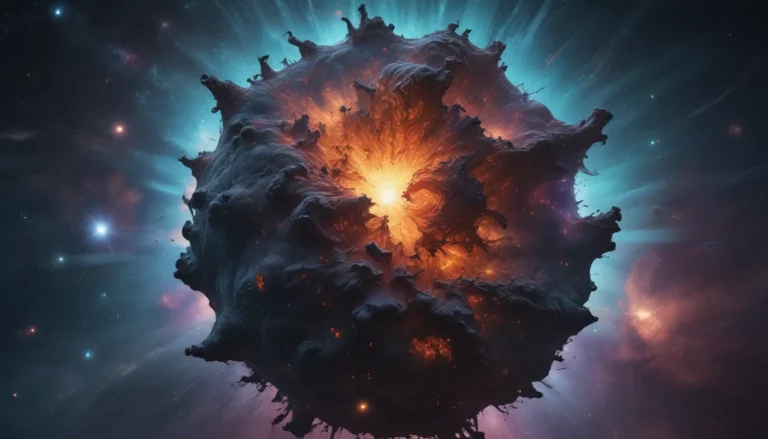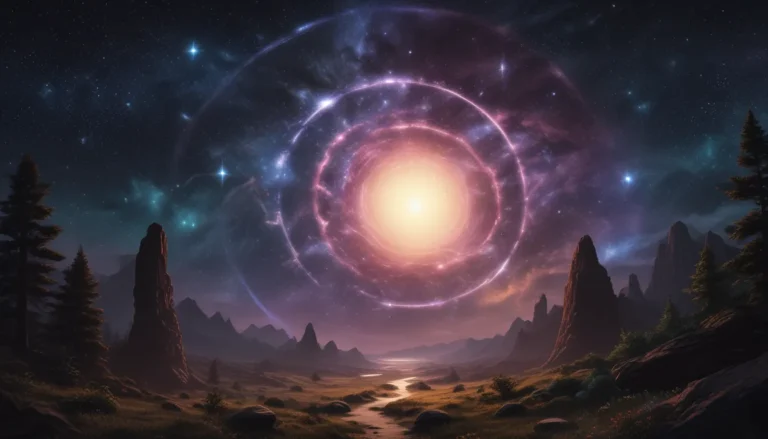The pictures we use in our articles might not show exactly what the words say. We choose these pictures to make you interested in reading more. The pictures work together with the words but don’t take their place. The words still tell you the important facts.
Are you ready to embark on a thrilling adventure through the captivating world of planetesimals? These small celestial bodies hold the key to understanding the formation of planets and the evolution of planetary systems across the Universe. Join us as we explore 16 fascinating facts about planetesimals that will leave you in awe of the wonders of the cosmos. From their diverse compositions to their role in shaping planetary rings, each fact sheds light on the intricate processes that govern our cosmic neighborhood. So, buckle up and get ready for an exhilarating journey through the mesmerizing world of planetesimals!
Unraveling the Cosmic Mysteries of Planetesimals
- Planetesimals are the cosmic building blocks of planets: These small celestial bodies come in various compositions and sizes, colliding and merging to shape our Solar System and influence planetary systems across the Universe.
- Scientists study planetesimals through simulations and meteorites: By utilizing simulations and analyzing meteorites, scientists gain insights into planetesimal formation, planetary evolution, and the potential delivery of organic compounds.
The Building Blocks of Planets
Planetesimals are small celestial bodies that form through the process of accretion in the early stages of planetary formation. Ranging in size from a few meters to several kilometers, these rocky or icy bodies serve as the foundation upon which planets are built. Their crucial role in the formation and evolution of planetary systems highlights the intricate processes at play across the vastness of the cosmos.
A Symphony of Composition
One of the most fascinating aspects of planetesimals is their diverse composition. Some are primarily composed of rock and metal, while others consist of a combination of ice and dust particles. This variation is influenced by factors such as distance from their parent star and the conditions present in the protoplanetary disk, where these celestial bodies originate.
Collisions and Mergers
Asthe planetesimals orbit their parent star, they often collide and merge with other bodies in their path. These collisions result in smaller planetesimals merging together to form larger and more massive objects, a process known as accretion. This process plays a vital role in the growth of planetesimals into planets, shaping the trajectory of celestial bodies across the Universe.
Journeying Through the Planetary System
Planetesimals can be found in various regions within a planetary system, such as the inner or outer regions. The location of these celestial bodies influences their composition, with inner regions typically housing rockier bodies and outer regions being home to icier planetesimals. This diversity in location adds to the richness of the planetary system's tapestry.
Pioneers of Planetary Formation
The early Solar System saw planetesimals colliding and merging over millions of years to ultimately form the planets we observe today. These celestial pioneers played a crucial role in shaping the composition and distribution of materials in the protoplanetary disk, paving the way for the formation of rocky inner planets and gas giants in the outer regions.
From Planetesimals to Asteroids and Comets
While some planetesimals evolve into planets, others remain as smaller objects known as asteroids or comets, depending on their composition. Asteroids primarily consist of rock and metal and can be found in the asteroid belt, while comets, composed of icy materials, originate from the outer regions of the Solar System, adding diversity to the cosmic landscape.
Tracing Their Origins Through Meteorites
The first evidence of planetesimals was discovered in meteorites, fragments of asteroids or planetesimals that have fallen to Earth. Scientists study these meteorites to glean insights into the early solar system's formation, analyzing mineral grains and structures that provide valuable information about the building blocks of planets.
Echoes of Cosmic History
Some planetesimals may date back billions of years, offering a glimpse into the ancient conditions and processes that shaped planetary formation throughout cosmic history. These remnants from the early days of the Universe provide a window into the intricate dance of celestial bodies across the vast expanse of space.
Embracing Irregular Beauty
Unlike perfectly spherical planets, planetesimals often boast irregular shapes due to their turbulent formation process. Factors such as collisions, gravitational interactions, and rotational forces influence the shapes of these celestial bodies, adding a unique charm to the cosmic panorama.
Simulating the Dynamics
Studying planetesimals directly poses challenges, prompting scientists to rely on computer simulations and models to understand their formation and behavior. These simulations recreate the conditions of early planetary systems, offering insights into the processes of planet formation and the evolution of celestial bodies across the Universe.
Carriers of Organic Mysteries
Some planetesimals harbor organic compounds, including amino acids, the building blocks of life as we know it. The potential delivery of these compounds through impacts from planetesimals raises intriguing questions about the role these celestial bodies may have played in the emergence of life on Earth.
The Enigmatic Kuiper Belt
Beyond the orbit of Neptune lies the Kuiper Belt, a region teeming with planetesimals in our Solar System. These icy bodies, remnants from the early stages of planetary formation, provide vital information about the evolution and composition of our cosmic neighborhood, offering a gateway to the mysteries of the Universe.
Shaping Planetary Rings
Planetesimals play a significant role in the formation and shaping of planetary rings. Through gravitational interactions with ring particles, planetesimals create gaps, waves, and intricate structures within ring systems, adding a touch of complexity to the celestial rings that grace our planetary systems.
The Diversity of Size
The size distribution of planetesimals varies greatly, encompassing a wide range from tiny micrometeoroids to large bodies several kilometers in diameter. These variations in size provide valuable insights into the accretion and growth processes that unfolded during the formation of planetary systems, adding layers of complexity to the cosmic narrative.
Exploring Beyond Our Solar System
Planetesimals are not confined to our Solar System; they can be found in other star systems as well. Through the study of exoplanets and their debris disks, scientists have detected signatures of planetesimals orbiting distant stars, enriching our understanding of planetary system formation and the diversity of celestial bodies in the Universe.
A Dance Through Time
While the process of planet formation unfolded billions of years ago, planetesimals continue to exist and evolve within their respective planetary systems. These ongoing collisions and interactions offer vital insights into the dynamics and evolution of astronomical bodies, revealing the timeless dance of celestial objects across the cosmic stage.
Unveiling the Cosmic Tapestry
In conclusion, planetesimals stand as captivating celestial bodies that played a pivotal role in the creation of planets. These remnants of the early solar system offer a glimpse into the origins of our own planet and shed light on the formation and evolution of planetary systems across the Universe. By delving into the mysteries of planetesimals, scientists continue to uncover the secrets of our cosmic neighborhood, unraveling the complexities and wonders of the universe.
Frequently Asked Questions
-
What are planetesimals?
Planetesimals are small celestial bodies that formed during the early stages of planetary formation, made up of rocky or icy materials. -
How do planetesimals form?
Planetesimals form through the process of accretion, where small particles collide and merge due to gravitational forces. -
What role do planetesimals play in planet formation?
Planetesimals serve as the building blocks for the formation of planets, growing in size through accretion and collisions. -
How do scientists study planetesimals?
Scientists study planetesimals through telescope observations, simulations, and analysis of meteorites to understand their formation and behavior. -
Are there missions dedicated to studying planetesimals?
Yes, missions like NASA’s OSIRIS-REx are exploring near-Earth asteroids to study planetesimals up close. -
Can planetesimals support life?
While planetesimals themselves do not support life, they are vital in understanding the conditions necessary for the formation of habitable planets. -
How many planetesimals are there in the solar system?
The exact number of planetesimals in the solar system is unknown but estimated to be in the trillions, varying in size and composition. -
Are all planetesimals the same?
No, planetesimals vary in composition, size, and shape, showcasing the diverse nature of these celestial bodies. -
Can planetesimals collide with Earth?
Yes, planetesimals can collide with Earth, with smaller objects like meteoroids occasionally entering the atmosphere. -
How do planetesimals contribute to our understanding of the universe?
Studying planetesimals offers insights into the formation and evolution of planetary systems, enriching our knowledge of celestial bodies in the cosmos.
Embark on a journey through the cosmos, exploring the intricate world of planetesimals and uncovering the mysteries that shape our cosmic neighborhood. From the formation of planets to the evolution of planetary systems, these celestial marvels offer a glimpse into the timeless dance of celestial objects across the vastness of space. Join us in unraveling the secrets of planetesimals and embracing the wonders of the universe!






